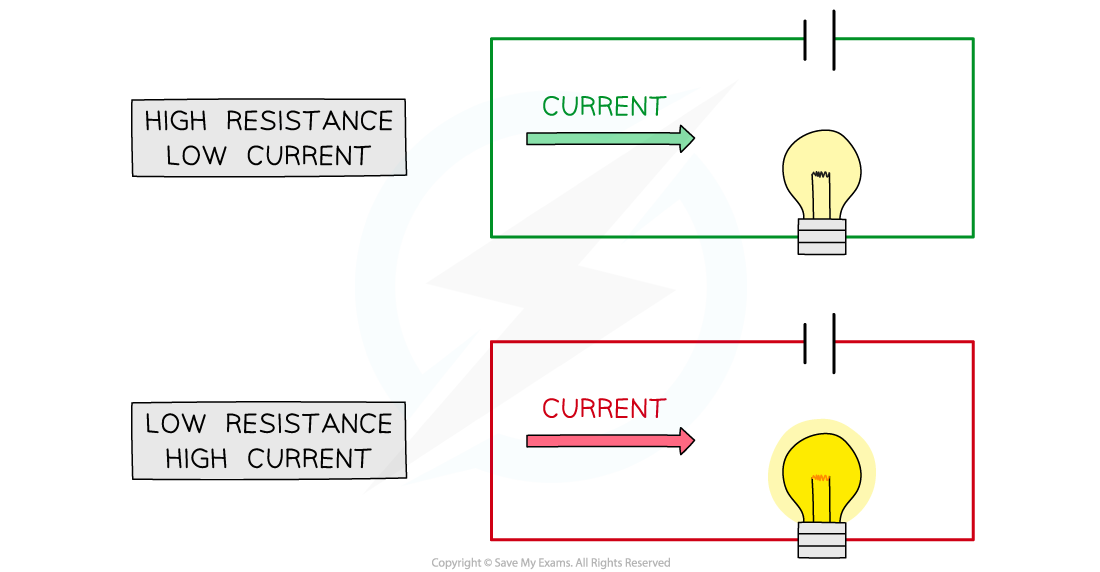Current, Resistance & Potential Difference (OCR GCSE Combined Science A (Gateway)) : Revision Note
Current, Resistance & Potential Difference
Potential Difference
The terminals of a cell make one end of the circuit positive and the other negative
This sets up a potential difference across the circuit
This is sometimes known as the voltage
Potential difference is defined as:
The amount of energy transferred per unit of charge passing through the terminals
This means that one volt (the unit of potential difference) is equivalent to one joule (the unit of energy) per coulomb (the unit of charge):
1 V = 1 J / C
Measuring Potential Difference
Potential difference (or voltage) is measured using a voltmeter
A voltmeter is always set up in parallel to the component being measured
This is described as measuring voltage 'across' the component

Potential difference (voltage) can be measured by connecting a voltmeter in parallel between two points in a circuit. Here, the voltmeter is measuring the voltage across the resistor
Current & Potential Difference
Current and potential difference are directly proportional to each other
When there is more current then that current has more potential difference
There are more electrons with potential difference moving around the circuit
Resistance
Resistance is defined as the opposition to current:
The higher the resistance of a circuit, the lower the current
This means that good conductors have a low resistance and insulators have a high resistance
The symbol for resistance is R
It is measured in Ohms (Ω)
Ω is the Greek capital letter ‘Omega’
An Ohm is defined as one volt per ampere (1 V / A)
The resistance of a circuit can be increased by adding resistors (or variable resistors) to it
In exam questions, the resistance of the wires and batteries are assumed to be negligible. Every electrical component has a resistance, even wires
Resistance & Current

High resistance means there is lower current and vice versa
The current I through a component depends on both the resistance R of the component and the potential difference V across the component
The greater the resistance R of the component, the lower the current I for a given potential difference V across the component
The lower the resistance R of the component, the greater the current I for a given potential difference V across the component
Calculating Current, Resistance & Potential Difference
The current, resistance and potential difference of a component in a circuit are calculated using the equation:

This equation can be rearranged with the help of the following formula triangle:

Voltage, current, resistance formula triangle
Worked Example
Calculate the potential difference through a resistor of resistance 10 Ω if there is a current of 0.3 A through it.
Answer:
Step 1: List the known quantities
Resistance, R = 10 Ω
Current, I = 0.3 A
Step 2: Write the equation relating resistance, potential difference and current
V = IR
Step 3: Substitute in the values
V = 0.3 × 10 = 3 V
Examiner Tips and Tricks
Remember that 'voltage' and 'potential difference' are the same, either wording will be accepted in your exam answers.

You've read 0 of your 5 free revision notes this week
Sign up now. It’s free!
Did this page help you?
